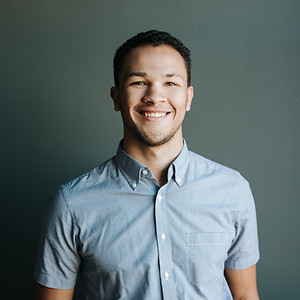Redesign of Esse3

Overview
Esse3 is a service provider of the University of Trento, which has an "internship and job offers" section. Students can find and apply for internships and job opportunities approved by the university in this section. Using the design thinking framework, we redesigned this section of ESSE3 to enable students to find and apply for internships and job opportunities easily.
My Role: User research, prototyping
Tools: Adobe Illustrator, Axure RP
Timeline: November 2019 - January 2020
Deliverables: Interactive Axure RP prototype, research findin
Team: Sevda AbdollahiNami, Federico Macchi, Gianmaria Mallozzi, Luca Martinelli, Antea Mascia Francesca
The Challenge
Although the University of Trento has provided a section on its platform (ESSE3), students barely use it to find and apply for internships or jobs. So, we conducted a case study to evaluate the current version of Esse3, understand the issues that students have with it, and eventually redesign it.
Our target group was students of the University of Trento, and the main aim of the research was to study how students interact, use, and think about the ESSE3 internship and job section.
The study revolved around the following questions:
-
Can students find and apply for internships or job openings through the university system?
-
Is this platform effective (allowing users to achieve their goals) and efficient (not using more resources than the ones strictly necessary)?
Project outline
Design Thinking Framework
To solve this challenge, we used the Design Thinking framework. Using this framework, we aimed to discover how users interact with Esse3 and investigate how it works. It allowed us to challenge assumptions, rethink problems, and develop new solutions by thinking outside the box.

Empathize
During the empathize phase, we used qualitative user research methods to better understand the users, their issues, desires, and requirements. An essential factor of the empathy phase was moving away from assumptions and allowing the research findings to drive our decision-making in the following design phases.
User research included ethnographies (observations), interviews, focus groups, and a workshop. We also analyzed similar websites to determine how students use them in their job search journey.
Online Ethnographies
According to our research question, we start looking at how students try to find and apply for an internship through the use of the university system. We began by analyzing the Esse3 system, particularly the section "Internship and Job Offers" and the website related to this section, "Job Guidance." We also researched external websites like "AlmaLaurea" and "UCPH Project and Jobs" to understand how different platforms help students with these tasks.
Assumptions of ESSE3
-
The users of the platform are students and the HR staff of companies.
-
The user has to speak Italian or English.
-
The user is looking for internships or job offers.
-
Companies are looking for employees.
Claims of ESSE3
-
Esse3 provides different sections for these user groups.
-
The platform has different language options: “Italian” and “English.”
-
The platform offers a list of vacancies.
-
The platform has all the information needed to make an announcement.
-
The platform provides the possibility to upload a CV.
Interviews
We used semi-structured interviews because they allowed us to follow guidelines that were previously created based on the data collected from ethnographies. In addition, we used probing techniques to ask for further clarification from the users.
We started creating these questions based on the data that emerged from ethnographies because we wanted to better understand the motivations behind people's behaviors. During this phase, we decided to make the target broader to better understand how the process behind the platform works. So we prepared four different kinds of interviews, one for each group of users: students, professors, company, and staff.
Students
The aim was to discover how they interact with the Esse3 platform, what their problems are, and their wishes to make the platform better in terms of user experience. During this interview, we asked the students to complete a task: navigate on the platform to find an internship suitable for their study plan.
Companies
With the companies instead, we wanted to discover how the process of registration and publication of the opportunities works.
Professors
With professors, the goal was to understand if they could access this platform to add opportunities for students. If they were not able to, we wanted to discover how they usually publish opportunities for internships.
University Staff
In the interview with the staff, we wanted to understand how the entire platform of Esse3 relates to the Job Guidance office.
Focus Group
We started the focus groups with the ice-breaking question: “What is an internship for you?” to encourage the participants to discuss it among themselves. Then we asked them to talk about their experiences, to make the participants comfortable. Subsequently, we introduced the context of our research and asked participants for their opinions about the existing platform and their ideas for a new one.

Workshop
Using a workshop, we aimed to evaluate the overall usability of the Esse3 platform from the students' points of view, namely our target. The workshop was carried out using various participatory design techniques; in particular, the classical approach to usability evaluations was discarded to increase the users' participation and involvement. It was divided into four phases: introduction, current practice scenarios, future scenarios, and debrief.

Introduction
During this phase, participants were briefly told the objectives of the workshop, the rules, and the topic. They played a simple game to break the ice, get to know each other, and exchange the first initial ideas about the topic "What is an internship for you?"
Current Practice Scenarios
Participants explored the platform by completing two different tasks. The first task involved looking for a company on the platform by searching using its name, and the second was related to finding a job opening abroad. During this phase, participants were encouraged to discuss with each other, help each other complete the tasks, and write down observations, positive and negative aspects encountered, along with suggestions and features that were expected


Debrief
Through an online questionnaire with open and closed-ended questions, participants gave their feedback about the workshop and some offered some final comments and thoughts; then they remained to talk to us, to give feedback about the workshop, and to enjoy a drink before dinner.
.jpg)
Define
Heuristic Evaluation: Usability Analysis of Esse3
In order to identify possible usability problems, we conducted a heuristic evaluation following the Nielsen guidelines:
Visibility of System Status
During the application process for an internship or a job, users should always be informed of some operations such as at what point is the upload of the CV, or at what point is the application process. Esse3 doesn’t respect the “Visibility of system status” heuristic. We uploaded a 3GB .mp4 file and the website didn’t inform us with a loading bar; from the screenshot of the interface below, the file appear as if it was already loaded into the system.

User Control and Freedom
According to this principle, a user in the system should be free to navigate and perform actions. For example, it should be possible to undo any accidental actions. In the “My opportunities” page, where is shown the list of favorite opportunities, it is not possible to undo the “cancel” action: a user that accidentally has canceled an opportunity has to find it again.

Consistency and Standards
Esse3 doesn’t respect this heuristic in some of its pages. As shown in the picture above, even if the system is set in English, some information is provided in both Italian and English.

Consistency and Standards
The “save this opportunity” button becomes “rimuovi dai preferiti” once selected.

Error Prevention
Mistakes and slip errors are not prevented in the Esse3 platform. For example, as for mistakes, the system doesn’t inform the user about an error uploading the CV (.mp4 video instead of a .pdf or .jpeg file).

Error Prevention
There isn’t a “slips” prevention as well: writing a wrong word, the system doesn’t inform the user about the mistake.

Error Prevention
In the “Companies” section, a label doesn’t provide clear information: we made many errors before understanding the meaning of “Part of the company presentation” and its utility.

Flexibility and Efficiency of Use
Interfaces are not personalizable by the users. For example,it is not possible to move the opportunities saved in order to create a personalized hierarchy.

AESTHETIC AND MINIMALIST DESIGN
Esse3 doesn’t provide clearly visible and unambiguous information: the interface is too cluttered with a lack of hierarchy. An example is the opportunity description page.

Results
The results of the Heuristic Evaluation made on Esse3 (“Internship and Job offers” section) have resumed in the following table.
The rating scale of severity of usability problem:

0 = lack of usability problems; 1 = aesthetic problems on the website; 2 = Minor usability problem; 3 = Major usability problem; 4 = Usability catastrophe
Ideate
Personas
During the ideation phase, we used personas as a guide to help us see patterns in the research, which allowed us to figure out what kinds of people we wanted to design for.
Matteo: Student of the University of Trento
Faculty: Computer Science
User needs: a platform to find in an effective and efficient way an internship in a company, in a specific field of study, in a specific geographic area, and in a specific period of time.
“In order to finish my master’s degree (MSc.) in Computer Science at the University of Trento, I have to do a curricular internship (10 CFU, 4 months minimum). I’m interested in Artificial Intelligence so I would like to find a company (in Trento province) that specialized in this field. In order to graduate in October 2020, I would like to do this internship during the second semester (from March to June 2020)”.


Prof. Rossi: Associate Professor of the University of Trento
Faculties: Psychology and Cognitive Science and Computer Science
User needs: a tool to add, effectively and efficiently, specific announcements (with specific criteria) about three intern positions at the University of Trento (Psychology and Cognitive Science department, Rovereto).
“I’m an associate professor at the Department of Psychology and Cognitive Science at the University of Trento. I’m starting a new research project about social robots, so three positions as interns are available for students with a master's degree in Human-Computer Interaction and Computer Science”.
Chiara: Job Guidance (University of Trento Administrative Staff)
Office: Job Guidance
User needs: a responsive platform where they can manage internships and job announcements and companies partnership in a more effective and efficient way.
“I’m part of the administrative staff of the University of Trento (Job Guidance office). I spend hours and hours per day replying to student’s emails on questions about internships… Additionally, I have to manage all the problems that companies and professors have with the Esse3 platform...”.

Analysis of Collected Data
We summarized the findings of the study into the advantages and disadvantages of the Esse3:
Pros
-
The platform is included in the same online system as other university services.
-
The possibility to apply for job proposals within the platform.
-
Possibility to save opportunities and consult them again later.
-
Serves also graduates and not only current students.
Cons
-
No tailored platform for students.
-
Lack of filters (as locations, start, and end date of the internship).
-
Lack of hierarchy with an outdated design interface.
-
No consistency between English and Italian.
-
Confusing and ambiguous labels.
-
No positions are shown on the company's page.
-
Many usability heuristics are not respected.
Prototype
Re-design Suggestions
The design suggestions are based on the results of the Heuristic Evaluation and qualitative methods. These suggestions were presented in an interactive prototype using Axure RP, which is available here. In order to keep the consistency of the section with the whole platform of ESSE3, we did not change the UI (appearance.)
Home Page
Some names were changed in order to create an unambiguous homepage. The new feature will allow the user to save the companies in the companies section and check it later on the home page.

Menu Bar
In the menu bar, some sections are eliminated: “my opportunities”, “my nominations”, and “my saved searches”. These pages are removed because they are already available on the home page.
Two sections added: “Dashboard”, “Companies” and “Accessibility tool”

Companies Page
According to the “Error prevention” heuristic analyzed before, we deleted the label “Part of the company presentation” and added the “Location” filter. In fact, there isn’t any location to filter the “Companies” page in the actual version of Esse3.

Location search, powered by Google, provides the user suggestions while typing to increase the utility of the platform.

Additionally, for a more complete and understandable page, we added the logo of the company, the number of jobs, and the button to save the company in “Saved Companies”.

Some sections have been modified in the description page of the company, to create a more aesthetic and minimalist design with a hierarchy. Moreover, we added the available opportunities in the company page.

Opportunities Page
New filters were added to the search engine of the “Opportunities” page, including location and language (which language is required to do the internship/job).
Additionally, we added a tailored feature on the “Opportunities” page. For example, when a student from the Master Degree in “Human-Computer Interaction” goes to the “Opportunities” page, he will see suggested opportunities only from his field of study.

Dashboard
In the “Dashboard”, the user (student) can edit, view, and download the cv. The user does not need to upload the cv every time he wants to apply for an internship/job

Accessibility
Approximately one billion people globally have a disability, and they can often face barriers when visiting inaccessible websites that prevent them from taking an active part in life.
The actual version of Esse3 doesn’t provide any Accessibility options for the users. For that reason, we decided to add an Accessibility tool powered by the Recite Me Website Accessibility Software [14]. This tool allows users to customize the website in a way that works best for them and includes features like a screen reader, reading tool, and background style options.
